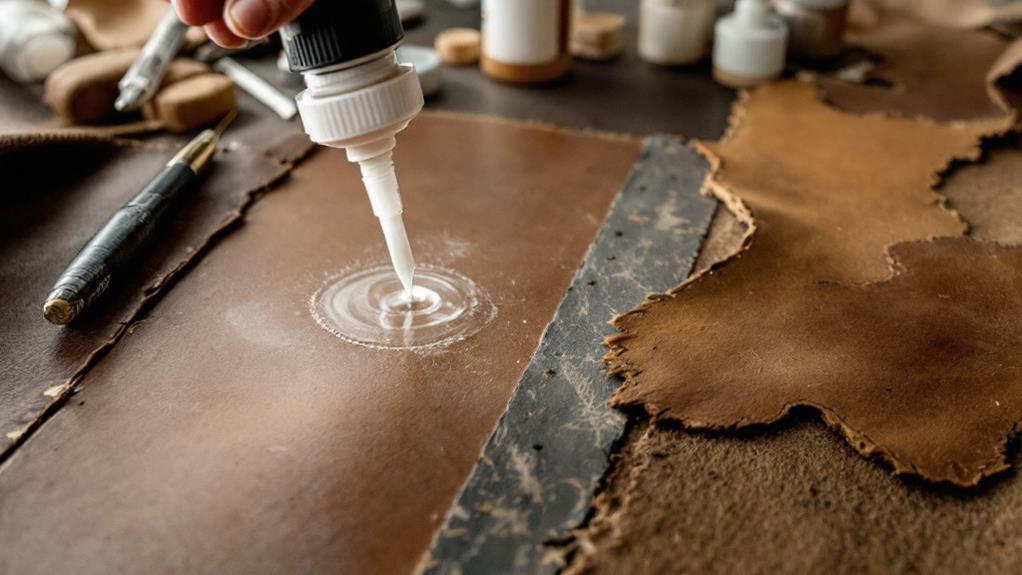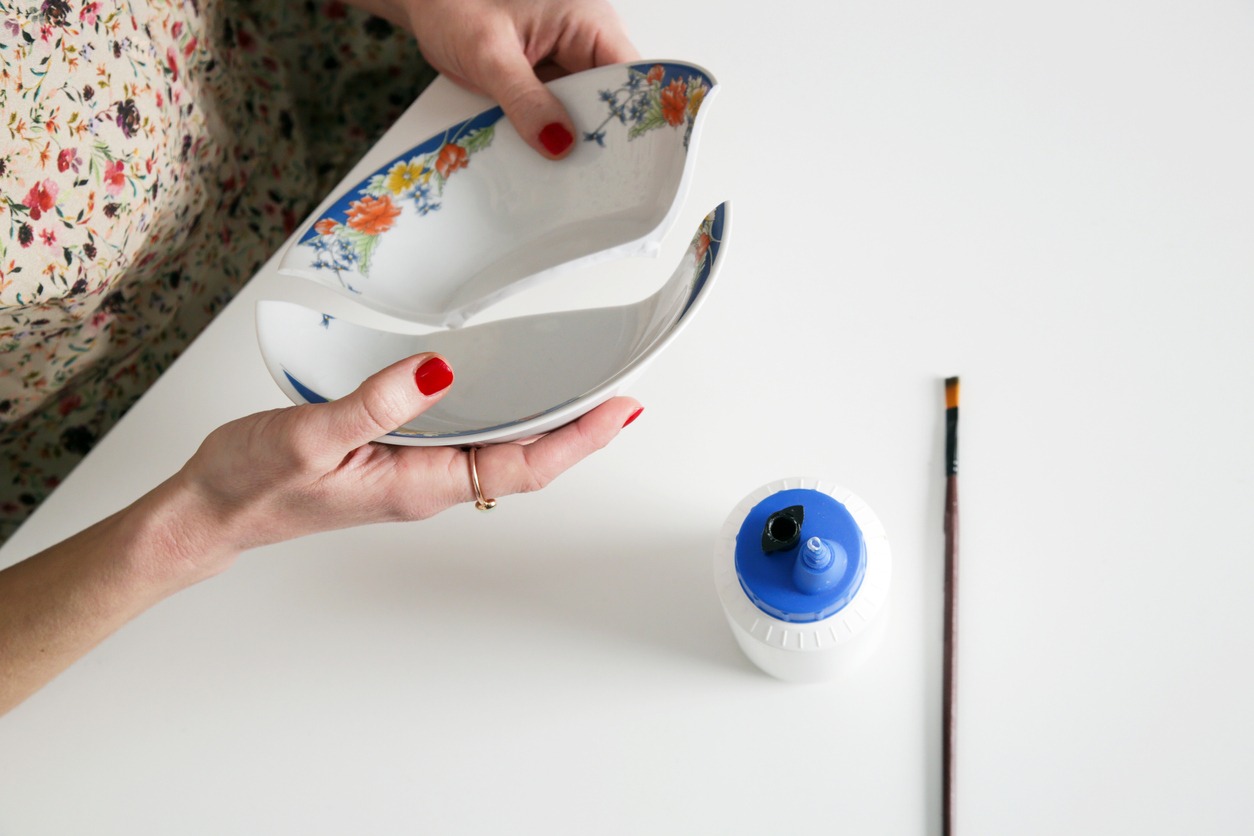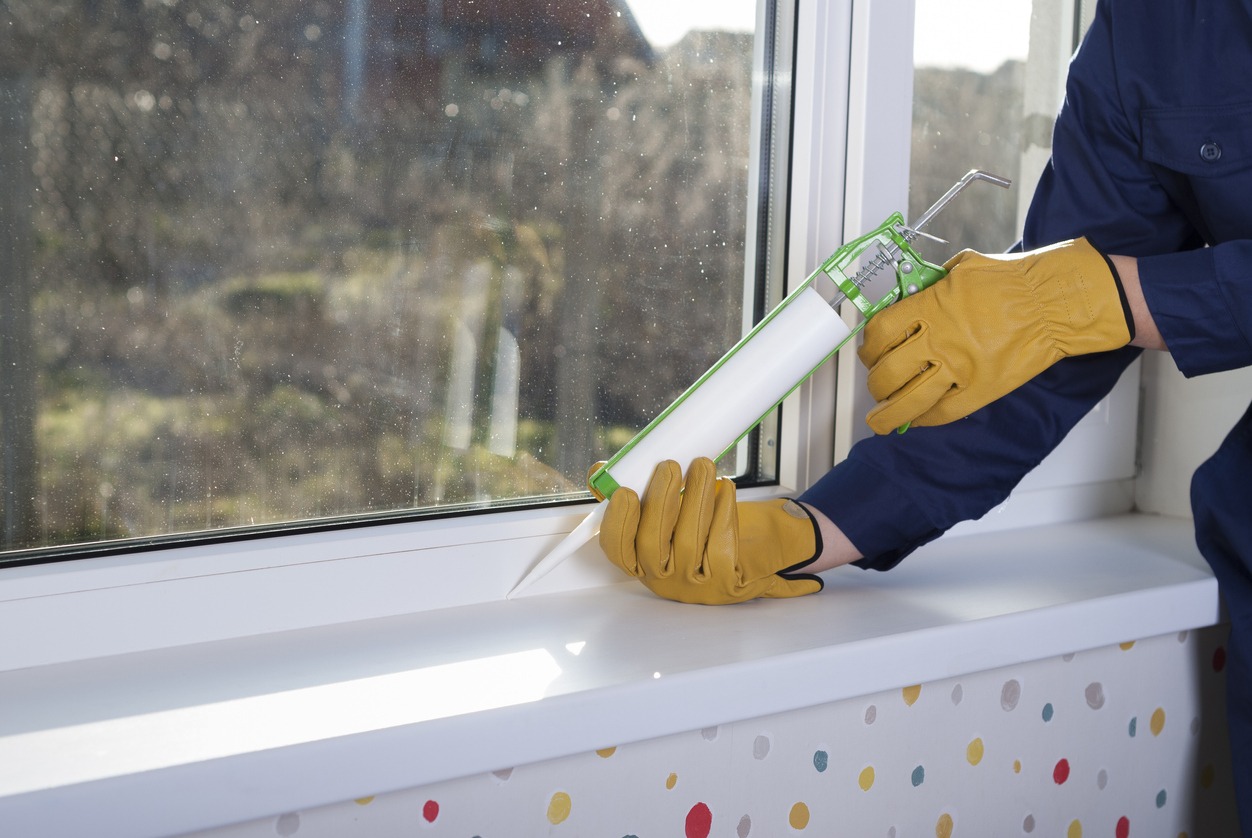What Is Sgraffito in Pottery?
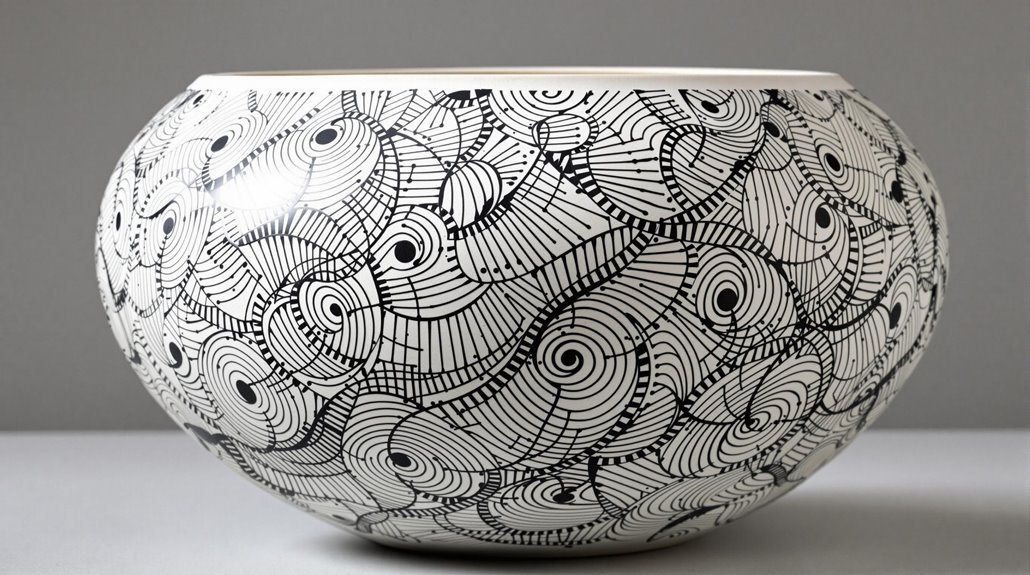
Sgraffito is a pottery decoration technique where you apply a dark-colored slip or underglaze to leather-hard clay, then scratch through it to reveal the lighter clay underneath. You'll use special tools like wire stylus or loop tools to create intricate patterns, images, and designs by removing the surface layer. This versatile method works on everything from decorative tiles to functional tableware. With the right tools and techniques, you can convert ordinary clay pieces into striking works of art.
Understanding the Ancient Art of Sgraffito
When you're working with sgraffito, you'll apply a layer of glaze or colored slip to your leather-hard clay surface. Using a sgraffito tool, you'll then scratch through this surface layer to reveal the clay body underneath, creating intricate patterns and designs.
You can create everything from simple line drawings to complex, multi-layered images. What makes this technique particularly special is its versatility - you'll find it used across cultures in various ceramic pieces, from decorative tiles to everyday tableware, allowing for endless creative possibilities. Once your design is complete, consider using UV-curing adhesives to repair any accidental scratches or chips that may occur during the creation process.
Essential Tools and Materials
To create successful sgraffito pottery, you'll need a carefully selected set of essential tools and materials. Working with leather hard clay, you'll use wire stylus tools, loop tools, and rubber shapers to etch your designs into the surface. Before you begin scratching, apply black underglaze or colored slips as your base layer.
Tracing paper proves indispensable for transferring your intended designs onto the clay surface with precision. After etching your pattern, use a soft brush to gently sweep away any debris created during the process. To preserve your artwork, bisque fire your piece first, then apply a clear protective glaze before the final firing. This two-step firing process guarantees your sgraffito details remain vivid and protected for years to come. Using a self-healing cutting mat beneath your work area will protect your crafting surface while ensuring precise, controlled etching of your designs.
Step-by-Step Sgraffito Technique
Before diving into sgraffito work, you'll need your leather-hard clay piece ready with a smooth, even surface. Start by transferring your design to tracing paper, then carefully trace it onto your clay piece.
Apply 2-3 coats of black underglaze evenly across your piece's surface. Once it's dry, use your wire stylus, loop tools, or rubber shapers to scratch through the underglaze, revealing the clay beneath. Work carefully to create your desired patterns and textures. Remember to clean up any loose material with wooden tools as you go.
After completing your sgraffito design, let the piece dry completely before it's bisque fired. You can touch up any areas of the underglaze that need attention, then apply a clear glaze. Finally, fire your piece to cone 6 for a finished result.
Much like working with scale modeling, this technique requires patience and practice to achieve optimal results.
Design Planning and Pattern Creation
Successful sgraffito work begins with thoughtful design planning. You'll want to start by selecting a prominent silhouette image for your foreground, typically in profile view. Make sure to trace the major outlines of your chosen design after scaling it to fit your pottery piece.
To create depth and visual interest, layer your images and patterns strategically. The background elements should be enough to hold the viewer's attention without overwhelming the main subject. You can experiment with different border patterns and place them behind sections of your foreground image. Before applying a layer of clear glaze, test your design combinations to guarantee they work harmoniously together. Consider using copyright-free images or your own photographs as reference material, which you can adapt and modify to suit your artistic vision.
Common Mistakes and Troubleshooting
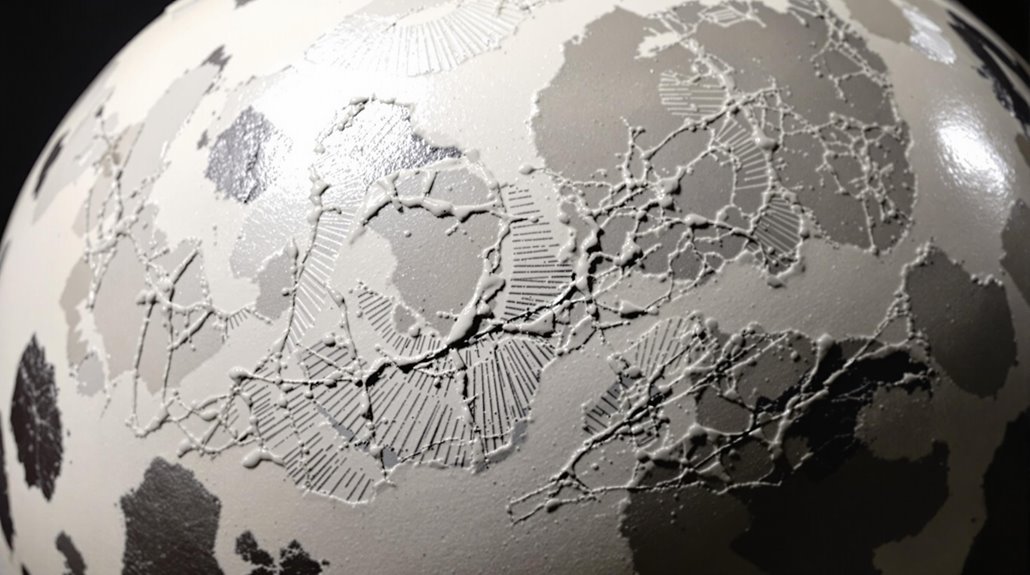
Precision in sgraffito requires awareness of common pitfalls that can derail your project. When you're too forceful as you means to scratch the design, you'll cut too deeply into the clay, creating uneven lines and potential weak spots. Applying slip unevenly onto the piece can result in patchy areas that don't reveal the contrasting clay body consistently.
You'll want to avoid working on clay that's too wet or too dry. If it's too wet, your tools will drag and create messy edges. If it's too dry, you'll get crumbling and chipping instead of a smooth surface. Watch out for rushed drying times, which can cause the slip to crack or peel. Additionally, keep your tools clean and sharp - dull or dirty tools will create jagged, unprofessional lines in your design.
Firing and Glazing Tips
The final phase of sgraffito pottery requires careful attention to firing and glazing techniques. You'll want to bisque fire your pieces to cone 04 before proceeding with the stoneware firing at cone 6, which helps properly mature your underglaze colors. When loading your kiln, position pieces so that delicate sgraffito areas aren't directly exposed to heating elements, preventing unwanted bubbling.
Commercial glazes specifically formulated for underglaze applications are a good source of reliable results. If you're using heavy metals in homemade glazes, always test their compatibility with your underglazes first to avoid bleeding or running. You can create vibrant visual effects by experimenting with different glaze finishes - try alternating between matte and glossy clear glazes to enhance your sgraffito decorations.
Creative Applications and Project Ideas
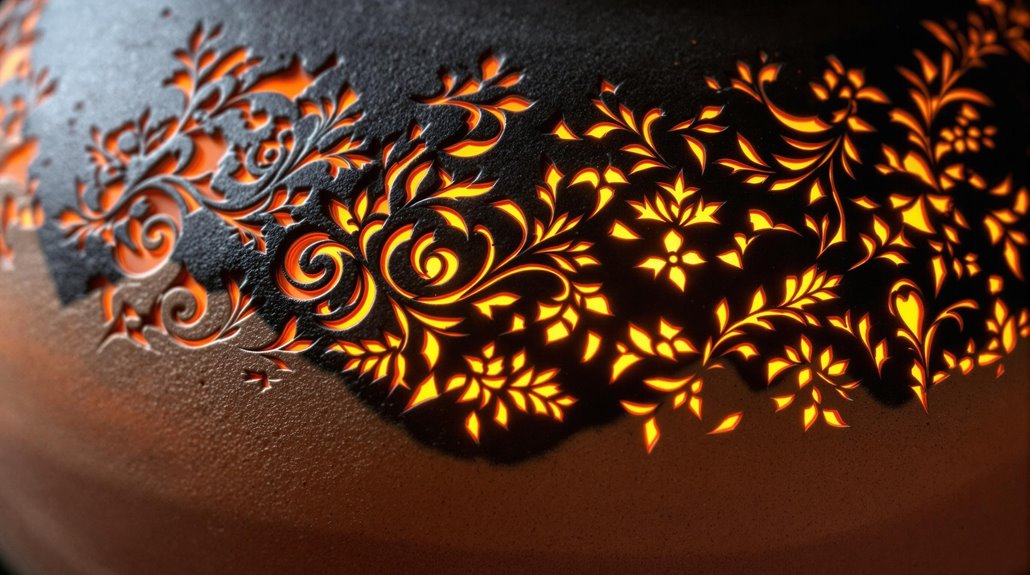
Many exciting sgraffito projects await both beginners and experienced potters. You'll find this technique is commonly used for creating decorative tiles, plates, mugs, and vases with striking patterns. While some areas are left unglazed to showcase the natural clay body, you can combine sgraffito with other methods like mishima inlay and slip trailing to enhance your designs.
Try personalizing your pieces by incorporating hand-drawn images, silhouettes, or meaningful text. Whether you're interested in bold graphic designs or delicate flowing patterns, sgraffito offers versatile possibilities for both functional and sculptural works. As mentioned in earlier terms in this article, you can layer different colored underglazes and then etch away portions to reveal contrasting surfaces, creating unique ceramic artworks that reflect your creative vision.

